Separated by the Adriatic Sea and in a seemingly endless conflict over Cypress, we nevertheless managed to have the cuisine of Greece and Turkey coexist on our table quite peacefully. Josée wanted to emphasise the similarities between these two cuisines and I think she managed this very well.
As any Greek will tell you, Greece is the birthplace of Modern Civilization and we remain grateful to it for having given us democracy, philosophy, Western literature, the Olympic Games, political science, Western drama as well as important scientific and mathematical principles. But it's food that concerns us today and in that respect, Greece's cuisine is bountiful. Consider feta cheese, peppery olive oil, fresh fruits like my favorite, figs, vegetables such as eggplant, and zucchini; Think of yogurt, nuts, honey and filo pastry.
Turkish cuisine consists of a fusion and refinement of Central Asian, Middle Eastern and Balkan cuisines. Turkish cuisine varies from region to region but popular ingredients include eggplant, tomatoes, garlic, olive oil, grilled meats, mint, dill, cumin, yogurt and bread. Meat, commonly lamb or chicken, is usually minced and added to vegetables. In Turkey as in many other Levantine countries, meze, a selection of small dishes, is served at the beginning of all large meals. Vegetables such as tomatoes, eggplant and peppers are cooked in olive oil and served at room temperature. Shish Kebab, skewered grilled lamb, is well known outside Turkey.
Josée's Greek and Turkish offering:
Lavash and Pita Bread
Dolmades with Mint Yogurt
Garides Me Feta
Pilic Adana Kebab
Karmi Yarik
Kisir
Tzaziki
Baklava
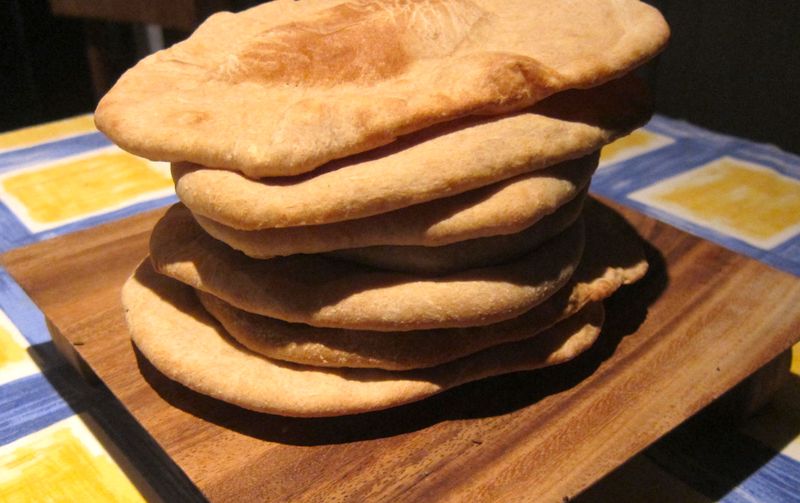
Over the years, Josée has become quite an accomplished baker. While her pita bread is to die for hot out of the oven, it is the lavash that is far more interesting to me. Lavash is flatbread popular in Turkey, Iran and other Caucasian countries. Traditionally the dough is rolled out flat and slapped against the hot walls of a clay oven. While quite flexible when fresh, lavash dries out quickly and becomes brittle and hard. The soft form is easier to use when making wrap sandwiches; however, the dry form can be used for long-term storage. Lavash is made with flour, water and salt. The thickness of the bread varies and depends on how thin it's rolled out. Toasted sesame seeds and/or poppy seeds can be sprinkled on before baking. Josée also used caraway seeds on her little lovelies.
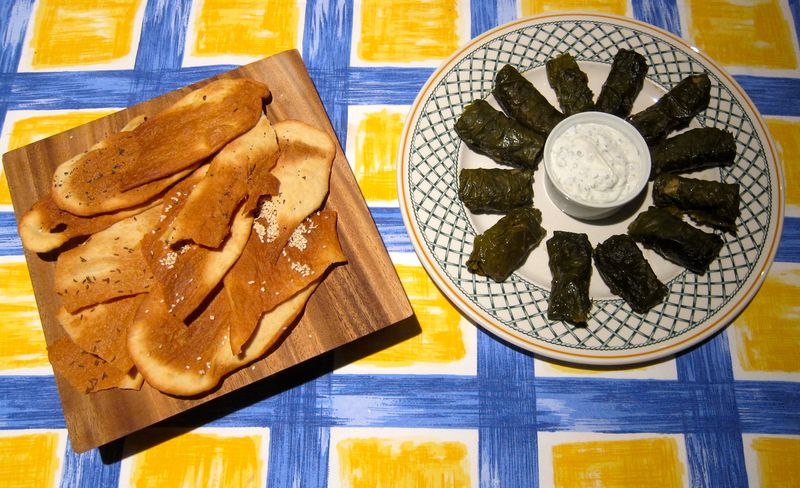
Dolmades are grape leaves stuffed with rice, currents and pine nuts and served with mint sauce.
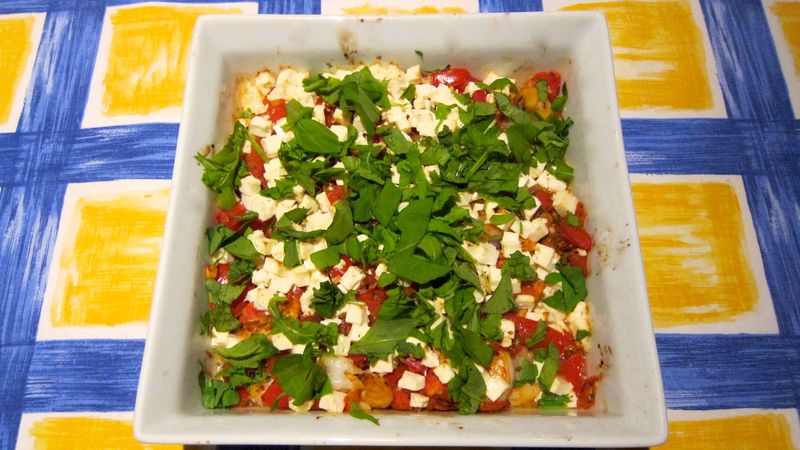
Garides Me Feta: Shrimps with Tomatoes, Oregano and Feta Cheese.
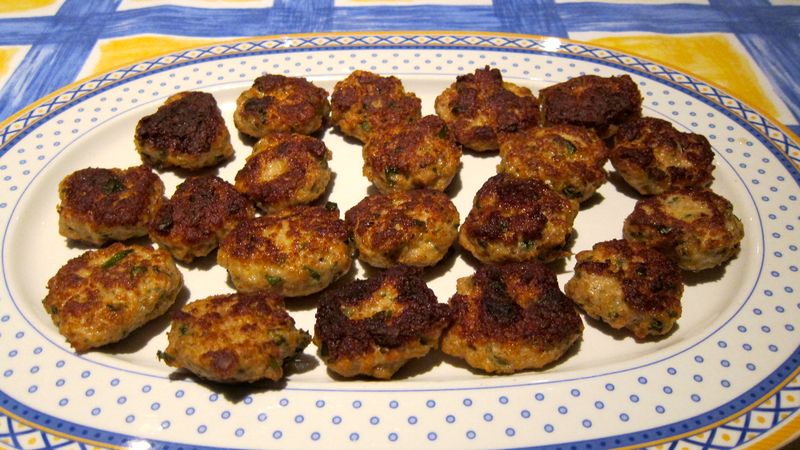
Pilic Adana Kebab: Chicken Kofte Kebab.
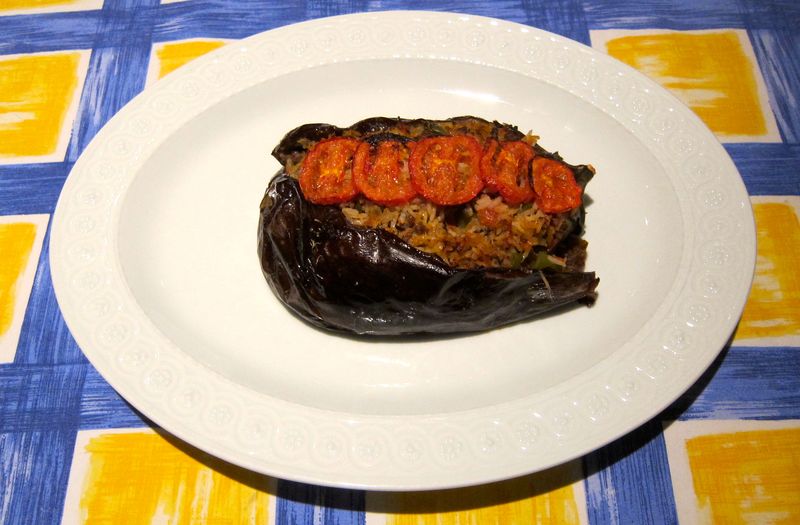
Karmi Yarik is Turkish eggplant stuffed with meat and rice.
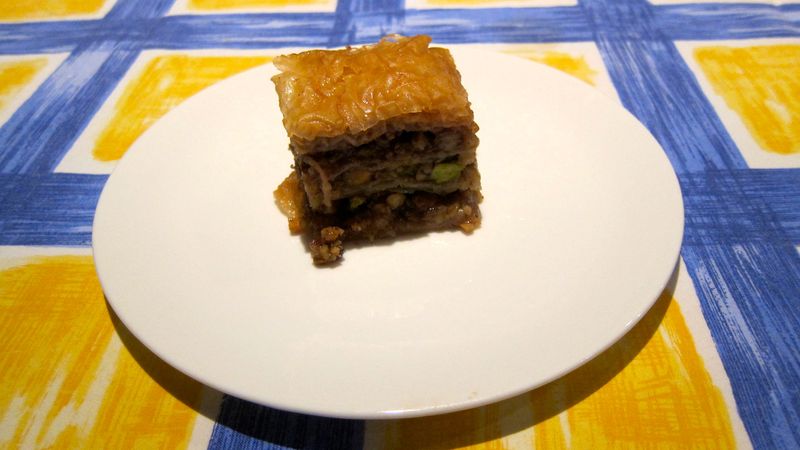
Baklava. Sinful. And totally naughty when served with......
The wines selection tonight was a bit complicated...but in a good way. I'll explain after the list of what was consumed.
"Calligramme", Domaine de Bellivière, Jasnières, 2004, France
Chateau Musar, Gaston Hochar, 1999, Lebanon
Wild Hogge Moongate, Paso Robles, 2010, California
Jade Moon Odyssey, Paso Robles, 2008, California
Chateau Coutet, Premier Cru Classé, Sauternes-Barsac, 1999, France
The wine that was meant to accompany the meal was Chateau Musar from Lebanon. If you have not had this wine before, I highly recommend it. Certainly, it is the perfect red to serve with food from any Levantine country. However, one of our guests, our good friend Huw Morris, is a retired anesthetist who used to live here in Bermuda but who has reincarnated as a winemaker in California. Huw insisted that we try his new wines and we found it impossible to refuse. Large quantities were consumed, once again.
I seem to be having a second wind. Today, I played 18 holes of golf and paddled 8 km.
Next, India.
Cheers,
Joseph Froncioni








































































































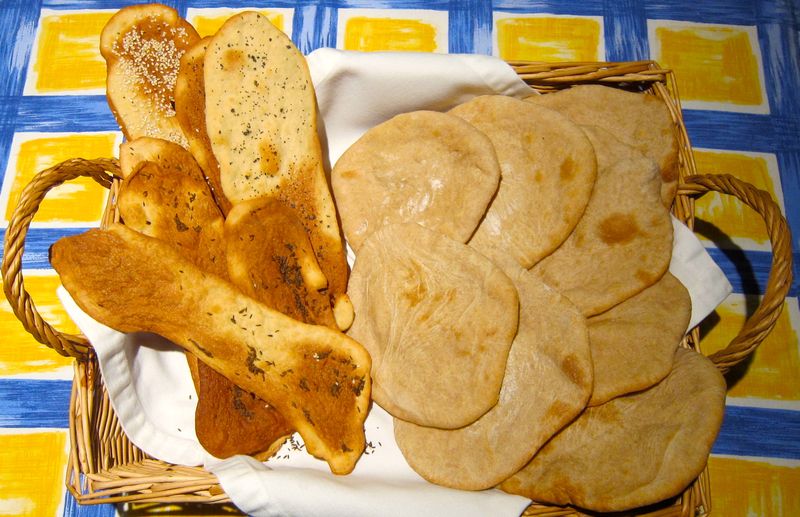
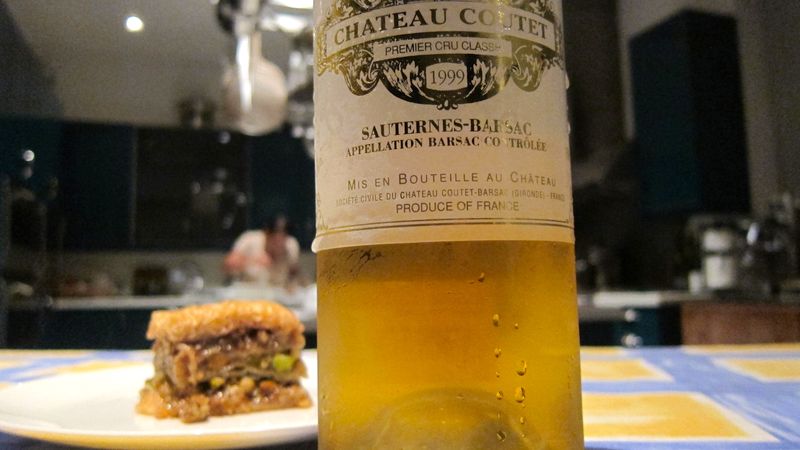
Comments